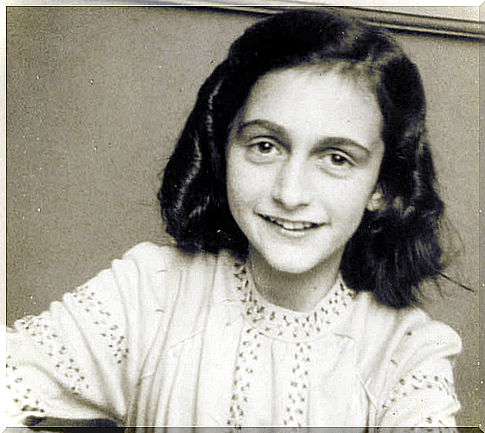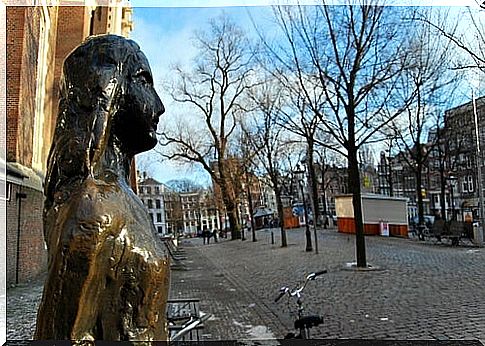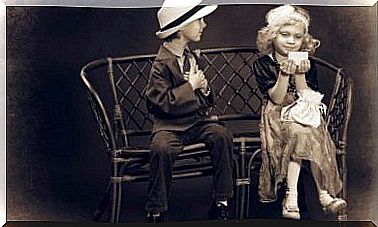Anne Frank, Biography Of A Resilient Girl

Anne Frank dreamed of becoming a journalist and then a great writer. It was his plan for the future when he started writing the diary, a plan he thought could become a reality after the war, when everything was back to normal. Things did not go as she imagined, but in the end Anne made her dream come true.
Anne Frank’s diary is considered one of the most moving testimonies ever. The blunt style and innocence through which he describes the horrors of war make him special. It continues to be one of the most widely read books, and has been listed on the UNESCO World Memory Register.
To escape Nazi hatred, Anne Frank had to hide with her family in a small secret quarters. The hiding lasted a little over two years, during which time Anne wrote her diary. In it we find the life of a young girl in full development, thrown into a terrifying reality, recorded with great charm.
The short life of Anne Frank
Anne Frank was born on June 12, 1929 in the German city of Frankfurt am Main. His father, Otto Frank, had served in the German army in World War I, earning the rank of lieutenant and a reward for military valor, the Iron Cross. He later became a banker and married Edith Höllander.
The couple had two daughters: Margot, born in 1926, and Anne, born three years later. The Frank family was a traditional upper-class Jewish family.
When Hitler came to power in Germany in 1933 and the persecution of the Jews began, the family decided to emigrate to Amsterdam.
Here Otto Frank started a company for the marketing of pectin and spices. Everything went well until 1942, when the Nazis invaded Holland and here too the hunt for Jews began. The Dutch were the only Europeans to openly oppose the persecution, but their protests had little effect.
Fleeing from persecution
The situation of the Jews was becoming increasingly tense. Otto Frank realized that the whole family was in grave danger and that the capture was only a matter of time. With the help of some co-workers, he organized a hiding place in the same building as the company.
In that complex there was an adjoining building, separated only by a courtyard. It had three floors and on the last one a secret door led to an attic. The access stairs, hidden by a sliding bookcase, led to a small accommodation with two bedrooms and a bathroom.
Otto shared his plans with his wife and eldest daughter, keeping Anne in the dark until she moved. It took place on July 9, 1942. Three days earlier, the eldest daughter Margot had received the intimation to report to the German authorities. This meant being arrested and deported.
It was time to hide; the Franks fled their home at night, wearing all the clothes they could, since it was dangerous to carry suitcases. They left the house in disorder and a note indicating their escape to Switzerland. The plan was well thought out.

A refuge, a universe
Over the next two years, the Franks lived in the shelter, joined by a second family and a dentist. Eight people to share a hiding place. Anne Frank described each of them with great depth and skill, making them literary characters.
The diary describes their characters and the understandable tensions that can arise in such a precarious situation. The group survived those two years thanks to the help of Dutch friends who took care of procuring food and keeping them informed about the development of the war. In that little hiding place, Anne thought about the world and fell in love for the first time.
This little world came to a halt on August 4, 1944, when officers of the Dutch Gestapo broke in. The illegal immigrants were sent to a concentration camp and the Frank family was separated at Auschwitz.
Anna was left alone with her sister and they ended up in the Bergen-Belsen camp, where they both died of typhus. The only one to survive was Otto Frank. When he returned to the hiding place looking for clues to the fate of the family members, the Red Cross informed him that they were all dead.
They gave him Anne’s diary, of which the man knew nothing. He immediately understood that it was a document of historical importance. Two years later he managed to get it published, fulfilling the dream of a girl forced to die at the age of 15.









